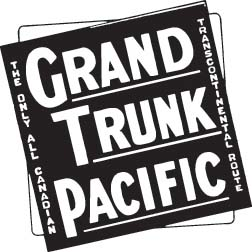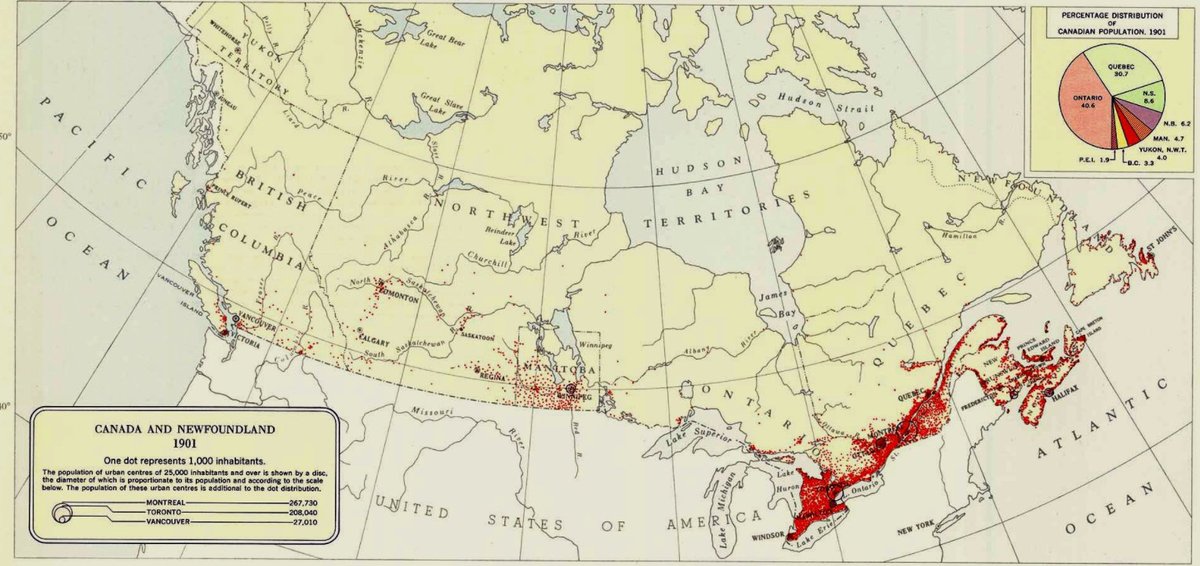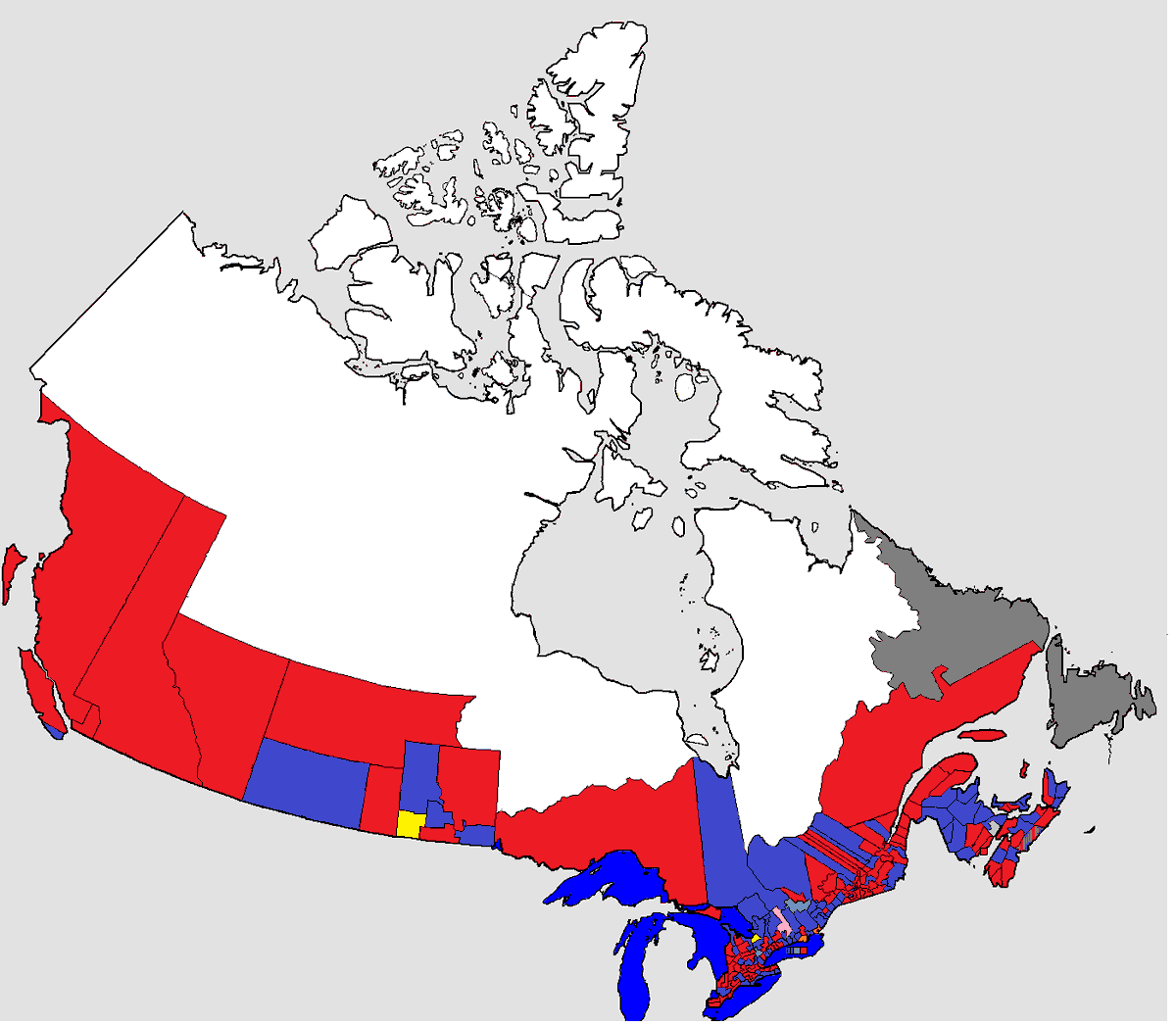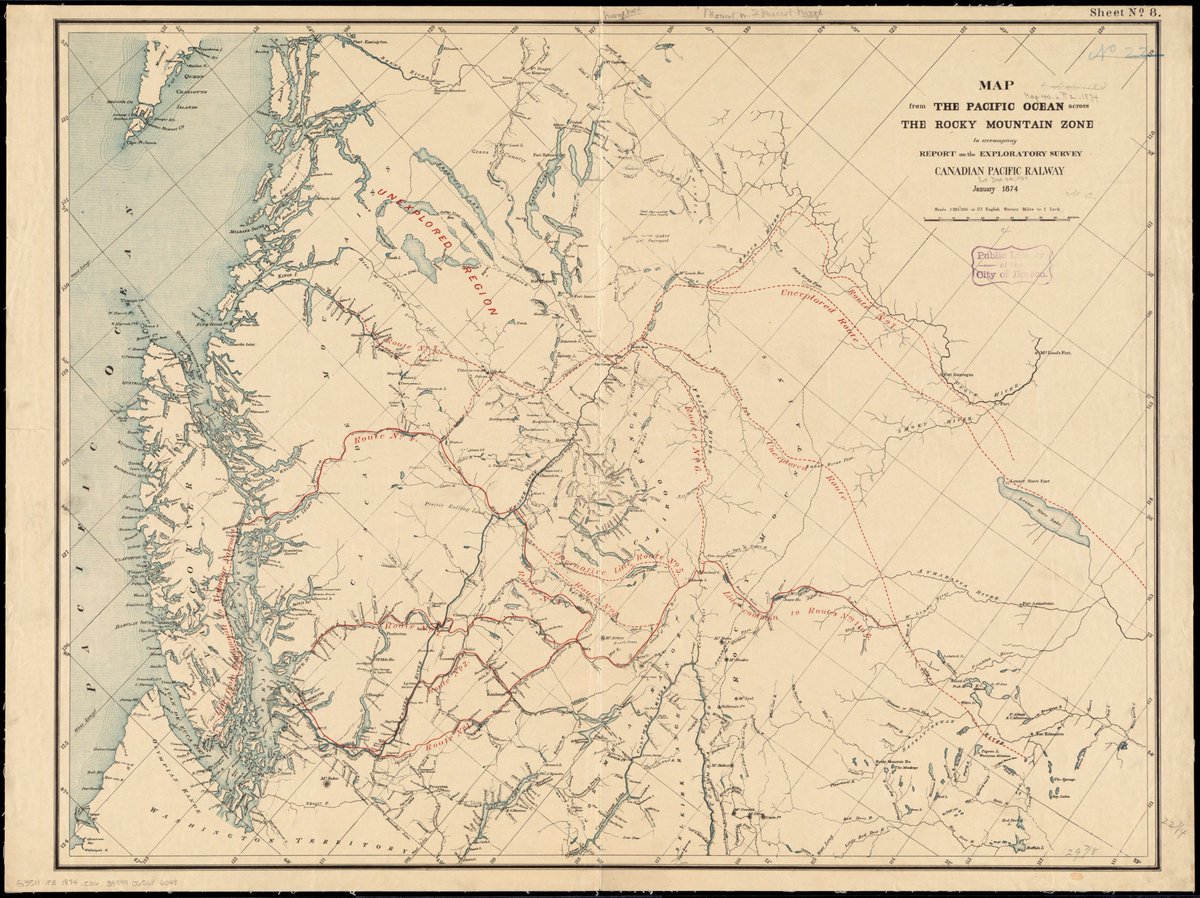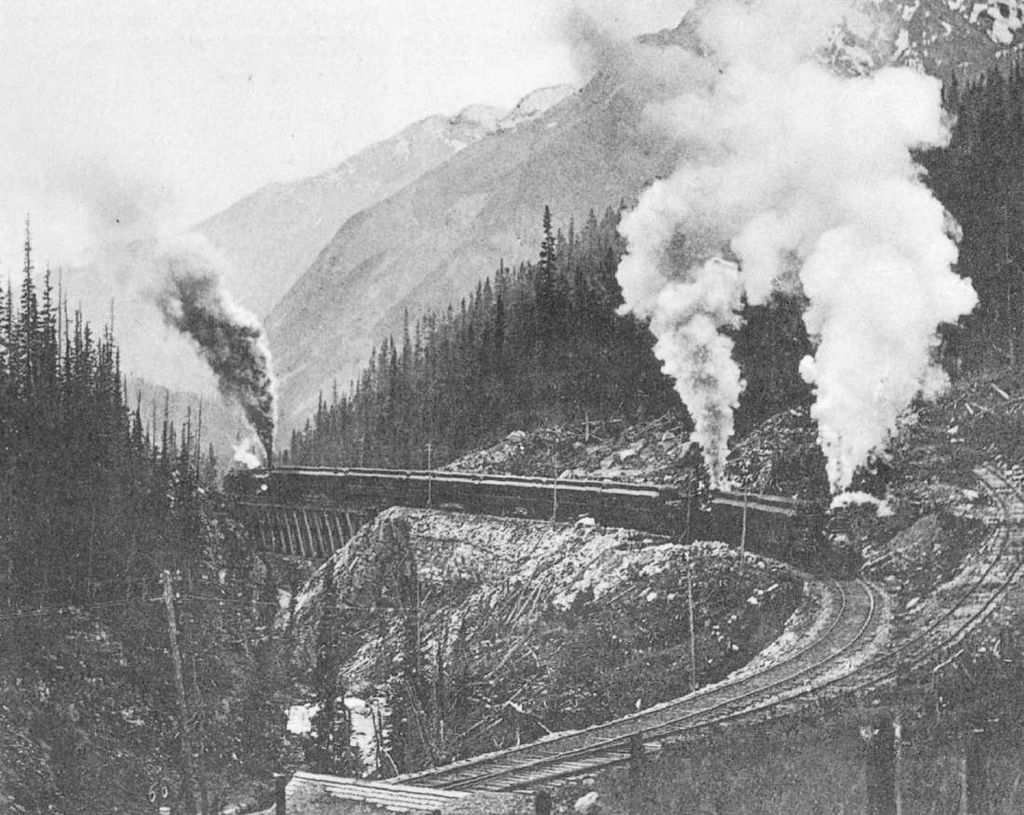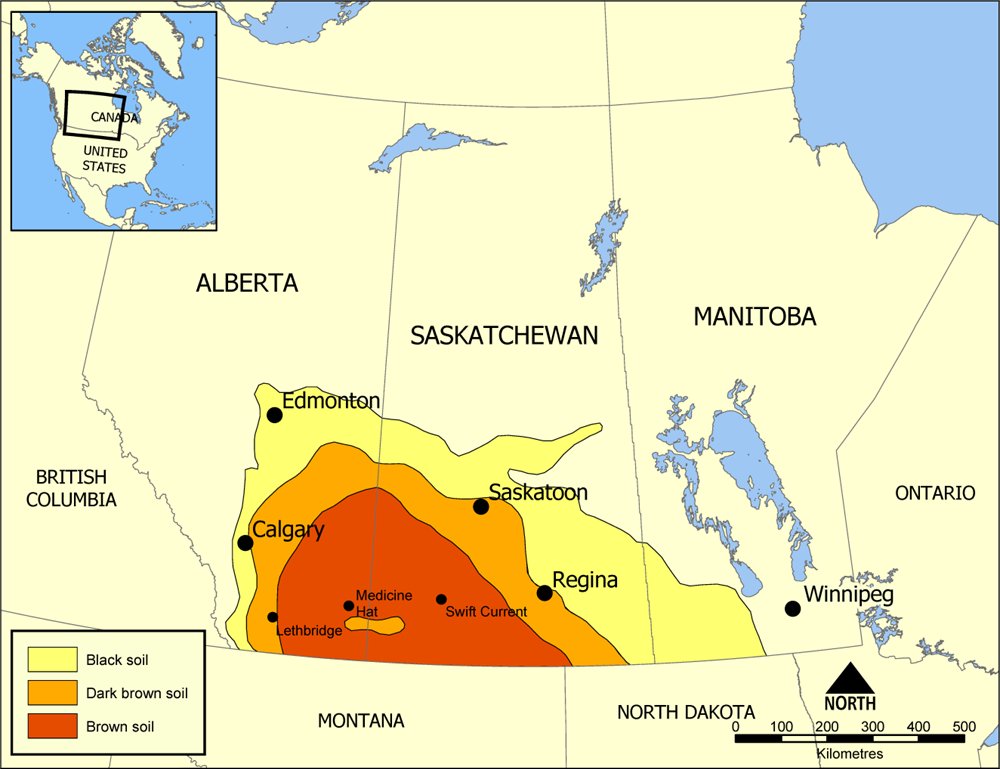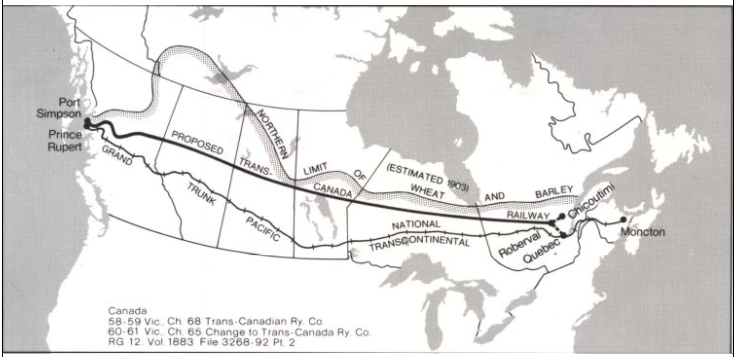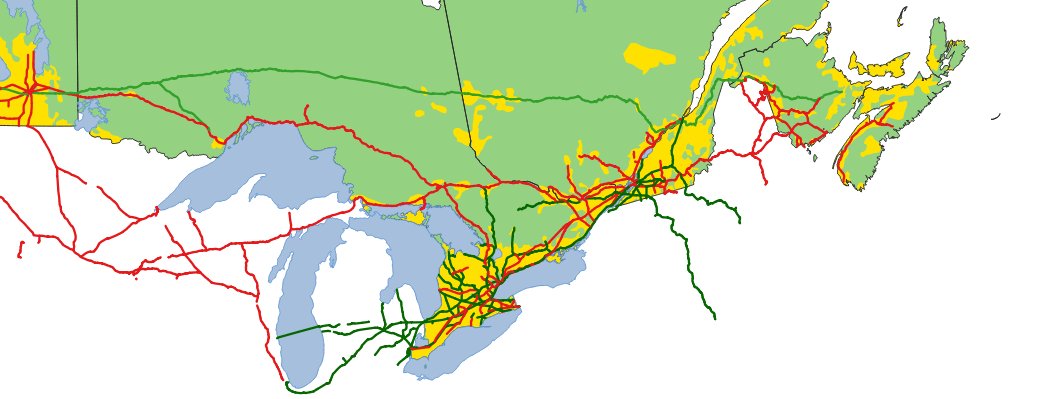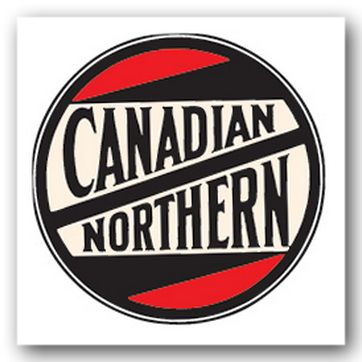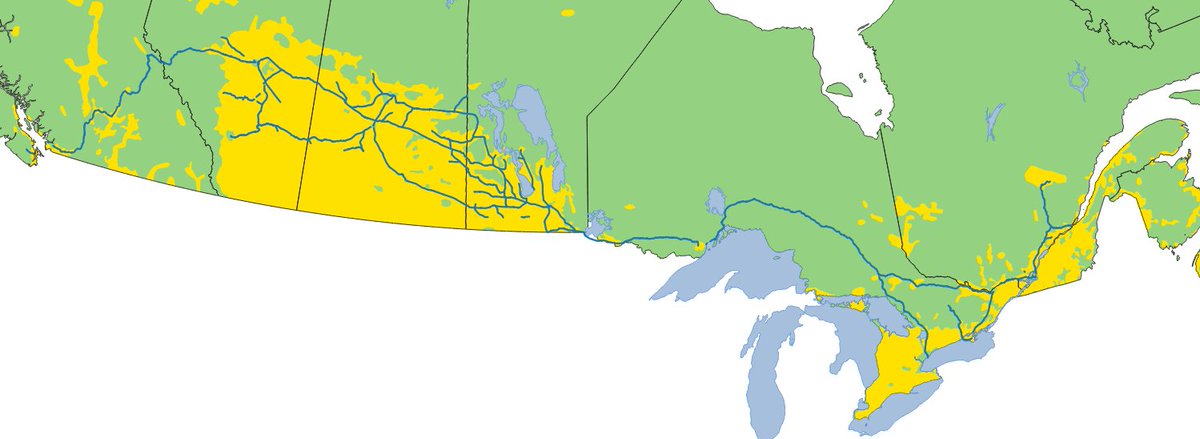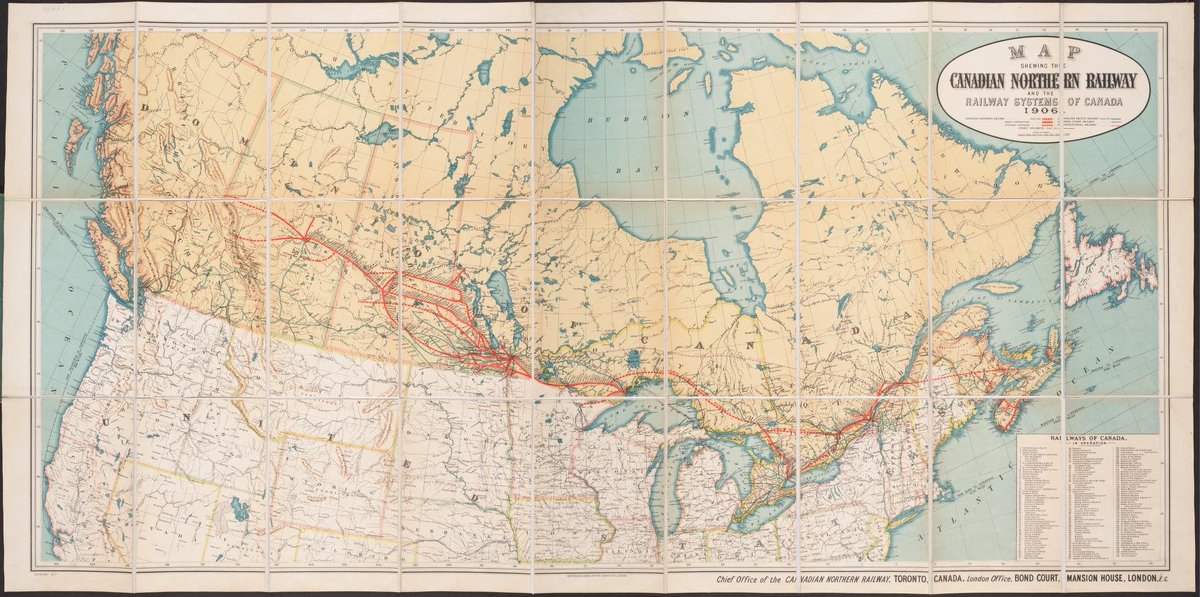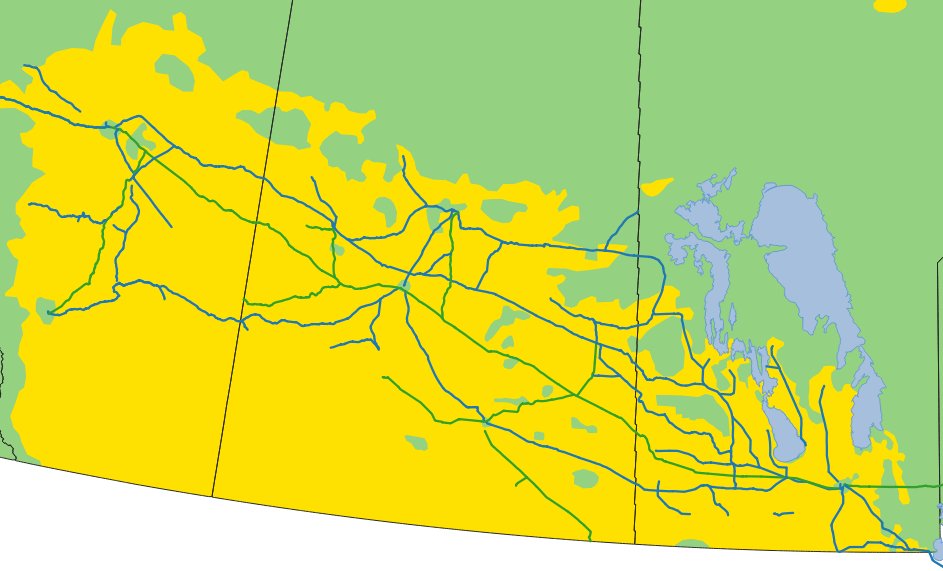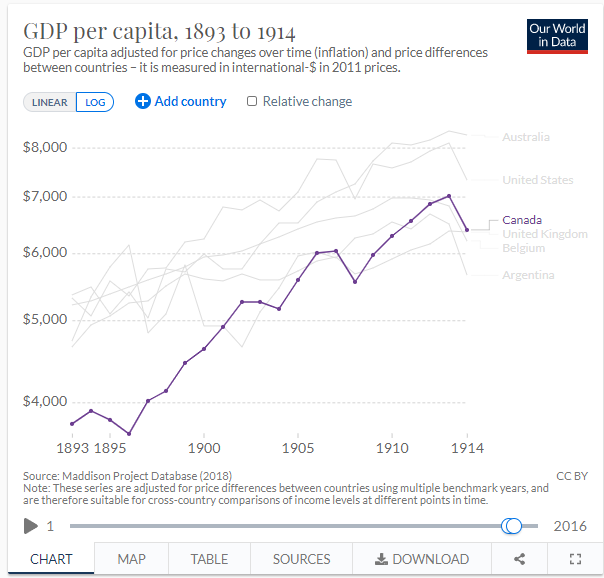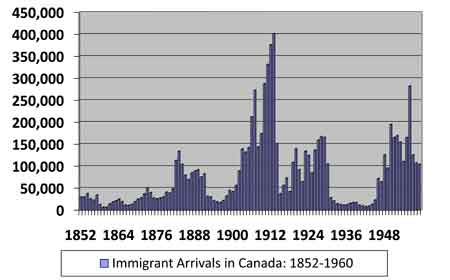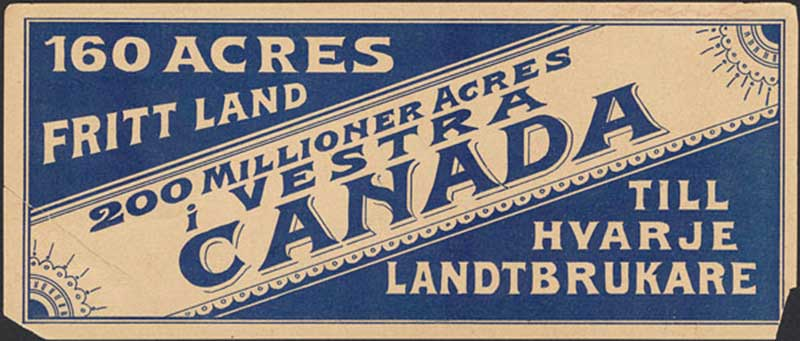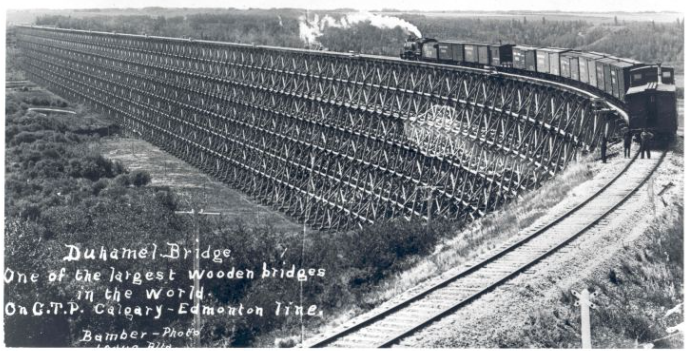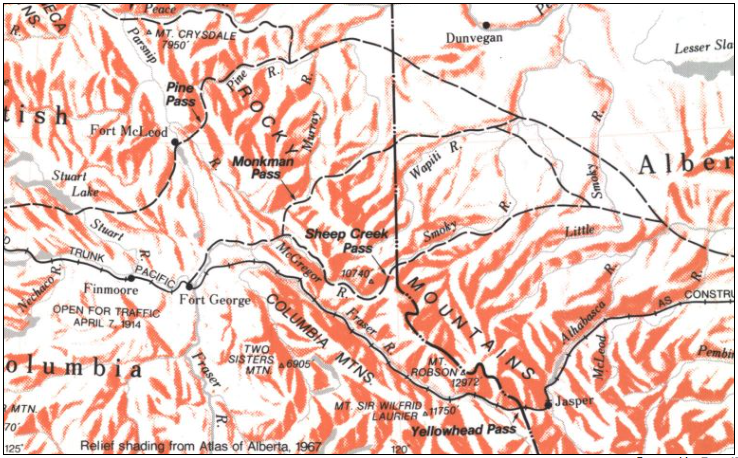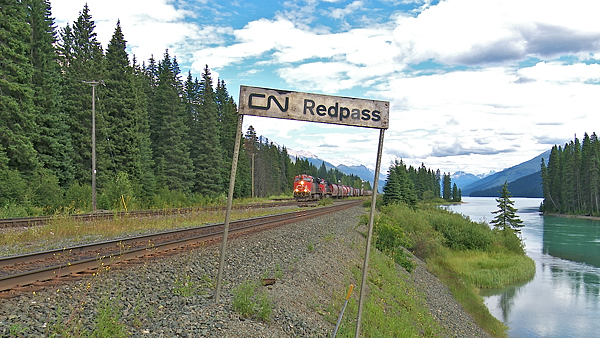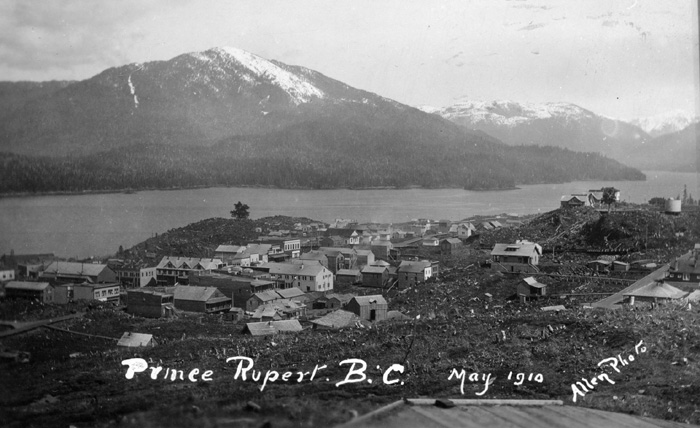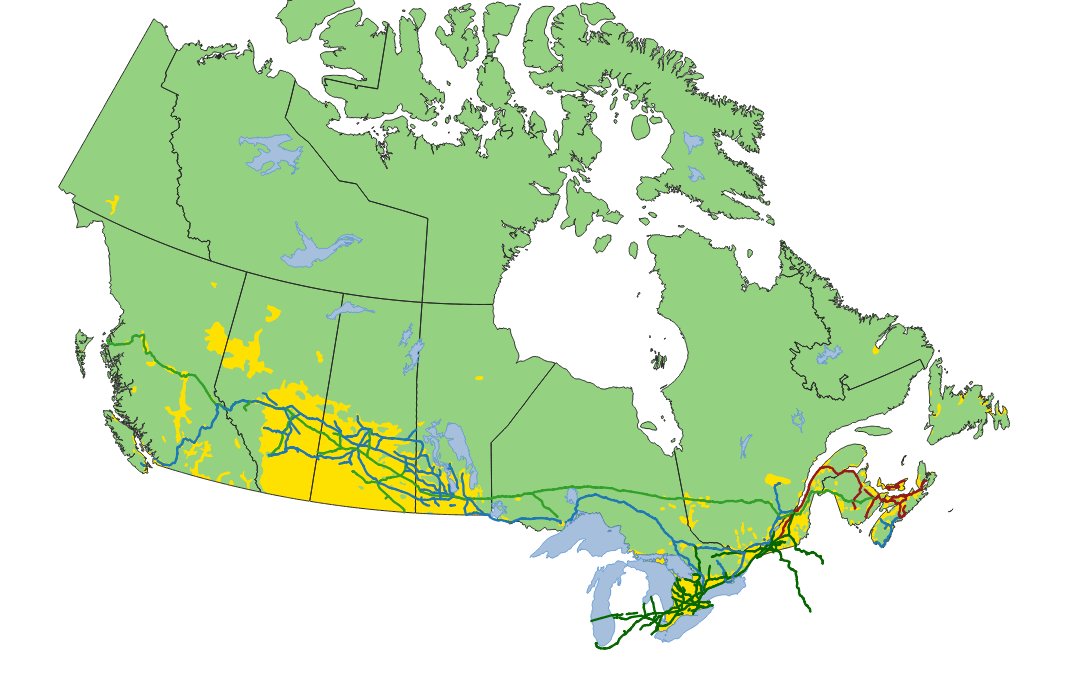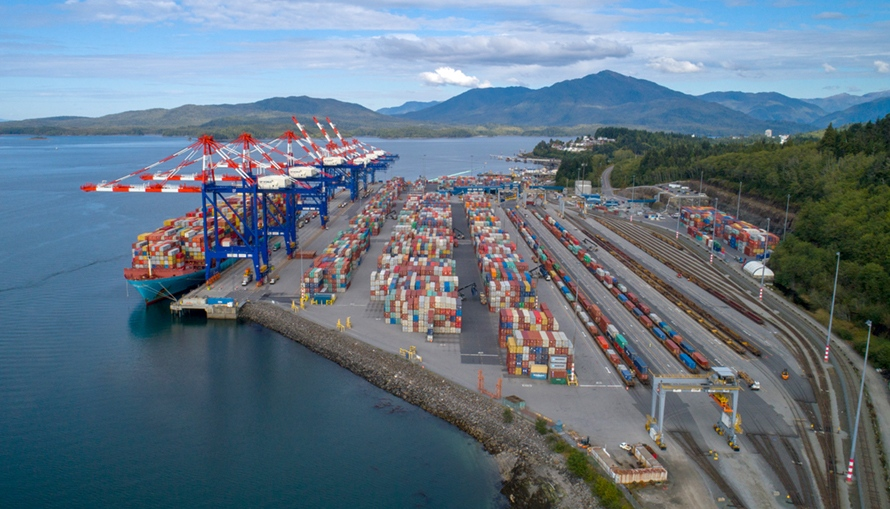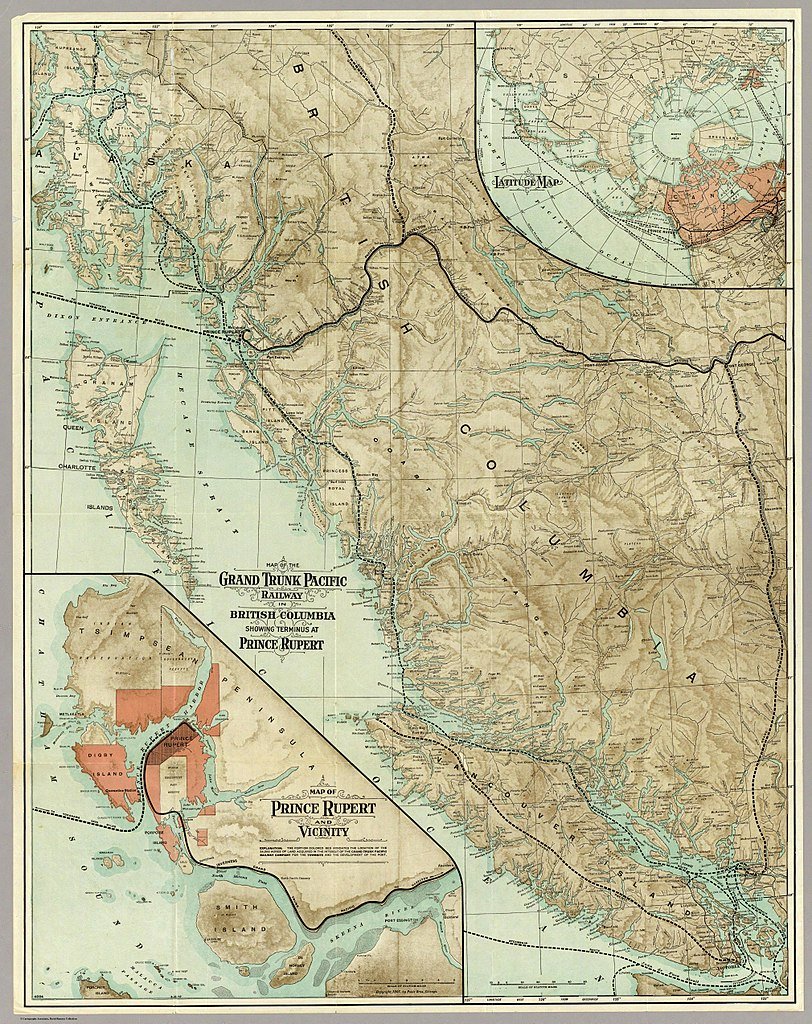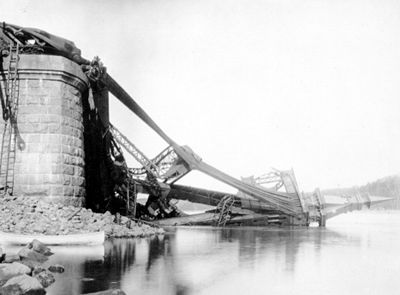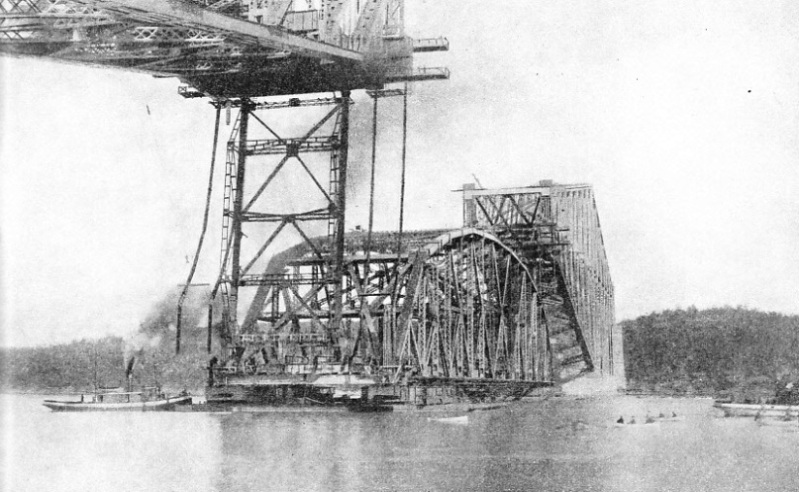Ok folks, it's time to talk about the fastest way from Prince Rupert to Moncton, Canada's supposed need for 3 transcontinental mainlines, and the GRAND TRUNK PACIFIC
This all starts around the turn of the last Century. The Canadian Pacific railway from Montreal to Vancouver was completed approximately 15 years earlier, but the West is far from fully colonized. Vancouver is but a small town of 26,000
In the East, the primary railways are the dominant Grand Trunk and the competing Canadian Pacific, but in the West, the CPR is an overwhelming monopoly, and one that had until only a few years prior been backed by a federal ban on competing railways. https://static.torontopubliclibrary.ca/da/images/LC/912-71-c58-11-small.jpg
Given high rates, protectionism, poor growth, there's great deal of dissatisfaction with this state of affairs, and an obvious market opportunity for a new railway to the West. In 1896, the CPR-friendly Conservative government is defeated by the Liberals with western support
Moreover, there seems an opportunity. The CPR had taken a more southerly route than the surveyors had plotted. While this had helped keep American railroads at bay, it had forced them to take the steep route through Kicking Horse Pass, as opposed to the gentle Yellowhead Pass
This route also left much of the most arable prairie land away from the mainline. The obvious solution, both to breaking the CP monopoly and expanding settlement would be an alternate mainline across the northern edge of the Prairies
Enter in 1902, the National Transcontinental Railway. Backed by the Federal Government as well as the Grand Trunk Railway, the project is conceived as building a new mainline from Prince Rupert in the Pacific to Winnipeg, and straight across the Canadian Shield to Quebec City
However, there are doubts about the viability of the whole plane at first. The Grand Trunk refuses to build the hard line through the Shield between Winnipeg and the Atlantic, preferring to invest in the profitable Prairies.
Instead, the line East of Winnipeg will be built by the Federal Government directly, bypassing Montreal and Toronto, but running to Quebec City, Laurier's home and constituency, and then run by the Grand Trunk under contract
The route is highly speculative - perhaps there will be minerals, but there is next-to-no soil in the Shield. Pictured are the proposed line (light green) as well as CPR (red) and GT(dark Green), as well as in yellow Canada's Agricultural 'ecuneme'
That's not the only problem. Westerners haven't been waiting for the Grand Trunk to save them-they've started building their own railroad. 1899, a group of Manitoba investors charter the Canadian Northern Railway. Initially cobbling together shortlines, they have ambitions.
the Canadian Northern had sought to be the Federal Partner for the National Transcontinental project, but absent such support they're carrying on anyway, aiming to build all the way from Vancouver to the Atlantic
Seeing GT coming, they accelerate construction. By 1906, the Canadian Northern (CNoR) have built a continuous line from Edmonton to Thunder Bay, and have begun work on Quebec & Ontario connecting lines https://ia800801.us.archive.org/BookReader/BookReaderImages.php?zip=/16/items/McGillLibrary-rbsc_map-canadian-northern-railway-1906_G3401P31906C36-17126/rbsc_map-canadian-northern-railway-1906_G3401P31906C36_jp2.zip&file=rbsc_map-canadian-northern-railway-1906_G3401P31906C36_jp2/rbsc_map-canadian-northern-railway-1906_G3401P31906C36_0000.jp2&id=McGillLibrary-rbsc_map-canadian-northern-railway-1906_G3401P31906C36-17126&scale=12.548327137546469&rotate=0
It's not complete overlap, however. The Canadian Northern intends to head to the developed port of Vancouver. They intend approximately parallel the CPR in Ontario and Quebec. But, in the key traffic generating region of the Prairies, they will be close competitors
But this is the Oughts! Canada is growing faster than ever before, incomes are surging. Vancouver has grown by 285% in a decade. 220% in Winnipeg. 900% in Edmonton! Laurier aims to bring Canada to a population of 40 million people, and 100,000s of immigrants enter annually
In a country like this, perhaps we're being too cautious? A typical speculative railway is built as cheaply as possible and upgraded as demand grows. Helps keep debt loads down during the crucial early years. This is how the Canadian Northern is being built. Not so for the GTP
With ample Federal funding and boundless optimism, the GTP is built day-one to generous mainline standards- heavy rail, 0.4% max. grades, 1400 foot min. curve radii. Below is pictured the Duhamel Bridge, then the largest wooden bridge in the world. All of this costs money
Both the CNoR and the GTP are at an impasse on crossing the mountains. All had looked at various routes over the Rockies from Edmonton - Peace River Pass, Pine Pass, Sheep Creek Pass, and the aforementioned Yellowhead Pass are considered
the CNoR has priority on the Yellowhead route, but after some legal struggle both railways precede on the tunnel-free pass, resulting in two parallel routes through Yellowhead, often mere feet from eachother. By now it's 1913
1913 is the peak year of the Wheat Boom in Canada, and the correction in 1914 is substantial but 1914 is...1914, and a business plan based upon massive inflows of labour and investment capital will start to run into some issues when Serb nationalists shoot an Austrian prince.
The business plan of both railways are similar to the CPR of the 1880s, or any other transcon - build into undeveloped lands, generate farms, mines, towns and mills that rely on your service which will generate operating profits to pay down construction financing
But the millions of internal and external migrants expected to be homesteading the new lines are now being conscripted by the various armies. Once abundant British investment capital rapidly changes direction as Westminster begins issuing enormous debts to fight the war
In so far as the war generates demand, it's applied towards existing farms and mills and infrastructure, not speculative ventures on new lines. CPR does quite well from the war, but the GTP is increasingly unable to service it's debts
And the already luxuriantly planned GTP had run considerably over budget, with track expected to cost $60k/mi in the mountains running at $105. With the GTP's pacific port barely more than a handful of stumps and 4,000 inhabitants, default loomed
In 1915 GT reneged on their deal to operate the National Transcontinental, itself hemorrhaging money. In 1918 the rival CNoR went under, and in 1919 the GTP defaulted on federal loans, entering Fed. Control. In 1920, the hole dragged down the parent Grand Trunk as well.
Ottawa would combine the GT/GTP/NTR (green), the CNoR (blue) along with the Intercolonial Railway and several other properties (maroon) to form Canadian National Railways, which would remain the largest railway in Canada to this day, and remained a Crown-corporation until 1995
Under CN, the former GTP serves as CN's continental mainline between Jasper and Winnipeg, and their line from Yellowhead Pass to Prince Rupert would eventually become heavily used in the 1990s with the century-late development of Prince Rupert https://www.westerninvestor.com/news/british-columbia/prince-rupert-quietly-becomes-a-port-powerhouse-1.23773202
Perhaps the plan to build an entirely new gold-plated mainline and build an entirely new Pacific metropolis would have panned out if the GT's president hadn't gone down with the Titanic. Perhaps if there had been a few more decades of the 19th Century https://en.wikipedia.org/wiki/Grand_Trunk_Pacific_Railway#/media/File:1910_GTP.jpg
But this did not happen. Others have argued that GT pres. Charles Melville Hayes mislead the board, and developed a fundamentally unsound scheme. And I have barely glanced on the disasters of the National Transcontinental
the Atlas of Alberta Railways was a great resource in putting this together https://railways.library.ualberta.ca/ContentsHome/
my take is that the scheme was at least a decade too late, and the end of the horizontal-expansion economy of the 19th Century meant that what worked in 1886 just didn't have the same impact in 1910

 Read on Twitter
Read on Twitter